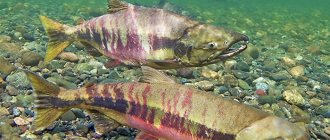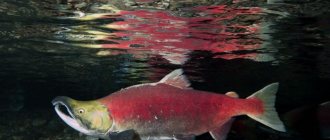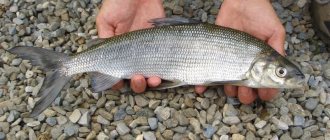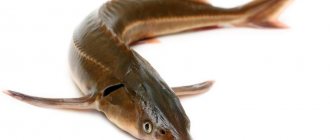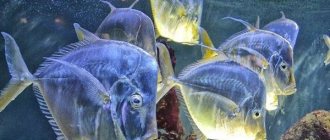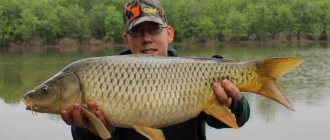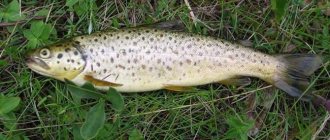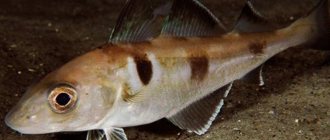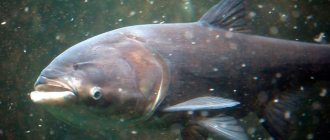Hoki is a fish belonging to the hake family. Its other name, "macuronus", is not often used. The fish are characterized by a fairly long tail without a pronounced fin and are classified as commercial fish. Hoki often appears on domestic shelves, but it can hardly be called popular. People buy this fish, as a rule, confusing it with hake. The fact is that it is sold mainly as gutted carcasses, so it is really quite easy to get confused. Moreover, without heads and tails they are very similar.
Useful properties of hoki
The introduction of grenadier into the diet allows you to:
- Saturate your body with animal proteins.
- Balance the menu in terms of energy value, since fish is a low-fat product. Fillet is well suited for dietary nutrition when losing weight.
- Improve the functioning of the digestive organs. The composition includes substances that provoke the activation of gastric juice. The product is easily digestible and is recommended by nutritionists for gastroenterological diseases.
- Strengthen the bone skeleton. This is facilitated by fluorine and calcium present in fish. Regular consumption of grenadier reduces the risk of osteochondrosis, rickets and oral problems.
- Replenish your supply of vitamins. With the help of hoki, you can protect the body from vitamin deficiency, restore strength after active physical activity or in the postoperative period.
- Resist the development of cardiac diseases, strengthen the heart muscle and improve heart function.
- Speed up metabolic processes, reduce the possibility of neuroses and depression, improve sleep.
- Strengthen the immune system, successfully resist the development of infectious diseases or damage to the body by parasites.
- Normalize thyroid function due to the high iodine content.
- Improve the functioning of the visual apparatus and increase its sharpness.
- Reduce blood pressure and improve hypertension, as khokie contains potassium.
- Improve the flow of blood through parts of the brain, develop mental abilities and memory.
- Remove toxic substances, heavy metal residues and excess cholesterol from the body.
- Stabilize the functioning of the hematopoietic system.
- Prevent the formation of cancerous tumors, since grenadier is a powerful antioxidant that eliminates the effect of free radicals.
- Slow down the aging process - restore the condition of the skin, strengthen the hair follicles and nails, and give the appearance a well-groomed appearance.
The benefits of red cod: what to expect from eating it
If you eat red cod regularly, this is enough to prevent diseases of the cardiovascular system, brain and more. Fish of this species have a positive effect on the body in at least 4 ways:
- Helps maintain normal weight. In addition to the fact that red cod has minimal calorie content, it has high nutritional value. Provides the need for protein, accelerates metabolic processes in the body by almost 10%. It also normalizes intestinal function. All this makes red cod an excellent assistant in the fight against excess body weight.
- Reduces the risk of heart and vascular diseases. This effect is explained by the high content of omega-3, omega-6 polyunsaturated fatty acids. They act as natural cleaners and eliminate excess cholesterol. They do not allow it to deposit on the walls of the arteries. Red cod helps in the prevention of hypertension, coronary heart disease, heart attack, and coronary insufficiency.
- Restores brain activity. Thanks to its rich composition, large amounts of phosphorus, B vitamins, and fatty acids. All cognitive functions: memory, attention, thinking return to normal. There is evidence that codfish play a major role in the prevention of Parkinson's and Alzheimer's diseases.
- Prevents vitamin B12 deficiency. This condition is more common than you might think. To encounter a problem, a slight but regular bleeding is enough. Or disorders of the gastrointestinal tract and disturbances in the absorption of nutrients. 100 grams of red cod per day completely covers the daily requirement for vitamin B12. The microelements and beneficial substances contained in fish improve its absorption.
There are other beneficial properties: increasing muscle mass, maintaining a normal thyroid gland. Red cod, along with expensive varieties of fish, can be a good help in maintaining health.
For children
Macrurus, whose benefits for the child are obvious, increases immunity, ensures the growth and development of all body systems. Strengthens bones and tooth enamel due to the high content of fluoride and phosphorus. Omega 3 fatty acids, iodine, B vitamins improve blood circulation in the brain and give the body energy. Thanks to this, children perceive educational material more easily during classes, better remember a large amount of information and feel less tired. The fish has very few bones, the meat is easily separated from the backbone.
Children can try khokki for the first time from the age of 11 months.
Composition of Hoki meat
100 g of fish contains:
Vitamins:
- A and RE – 30 mcg;
- B1 – 0.17 mg;
- B2 – 0.13 mg;
- B6 – 0.1 mg;
- B9 – 4.8 mcg;
- C – 1.7 mg;
Microelements:
- potassium – 300 mg;
- calcium – 30 mg;
- magnesium – 35 mg;
- phosphorus – 150 mg;
- iron – 0.63 mg;
- iodine – 0.050 mg;
- cobalt – 0.02 mg;
- manganese – 0.05 mg;
- chromium – 0.055 mg.
The vitamin and mineral composition is typical for most Codfish and almost completely replicates the composition of hake. But it also has its own characteristics. In particular, 100 g of hoki contains a daily dose of chromium and two daily doses of cobalt and the following essential amino acids:
- lysine – 1710 mg;
- leucine – 1070 mg;
- arginine – 980 mg.
Like all members of the family, grenadier meat contains Omega-3 fatty acids in the amount of 230 mg, which is approximately 30% more than that found in cod.
During pregnancy and breastfeeding
Hoki meat contains a maximum of nutrients for the successful development of the fetus and the health of the pregnant woman. The high concentration of minerals and vitamins contributes to the good functioning of the central nervous system, heart, and digestive organs.
Just a few servings of 100-200 grams of fish per week will make the expectant mother’s appearance fresher, eliminate skin imperfections, restore well-groomed hair and strong nails, and normalize pressure surges that often occur during pregnancy.
When breastfeeding, a woman transfers some of the substances she receives to her baby. Grenadier will help replenish reserves of easily digestible protein, quickly restore the body and hormonal levels after childbirth. Eliminates the problem of lack of sleep and relieves fatigue. It normalizes blood flow in the mother and strengthens the body of the newly born baby.
Taste characteristics
According to the reviews of amateurs, this fish in the large cod family is one of the first places in terms of its taste.
Its meat is white, almost boneless, making it easy to process and cook. It has a sweetish taste, not typical for fish, and rather resembles shrimp. In addition to the carcass, hoki liver and caviar are also of great value. The latter is somewhat similar in color and taste to salmon.
In Russian stores, this fish is most often found in the form of fresh frozen fillets, the main suppliers of which are domestic and European fishing companies. In appearance, it is often confused with hake. But hoki meat is much fattier and juicier, which is why dishes made from it are already loved by fans of fish cuisine.
It should be borne in mind that if the method of defrosting and cooking is chosen incorrectly, the fillet may fall apart into fibers and look completely unappetizing. The best option is to bake the fish at room temperature in foil in the oven or fry it in a small amount of vegetable oil.
Experts advise eating hoki dishes once or twice a week. The average serving size is 100-150 g. fillet. It is this amount that contributes to the complete supply of the body with all the necessary nutrients.
Calories and nutritional value
The calorie content of a grenadier dish depends on the way it is prepared. When boiled, Khoki contains 58.7 kcal per 100 grams. Baked fish includes 78 kcal, and fried grenadier provides the highest calorie content - up to 148 kcal. The product without processing contains 60 kcal.
Hoki fish, the benefits and harms of which differ little from other cod species, contains 13.2% protein and 0.8% fat. There are no carbohydrates in this variety.
The grenadier contains the following vitamins:
- A;
- IN;
- WITH;
- E;
- D;
- RR;
- TO;
- beta-carotene;
Minerals contained in fish include:
- macroelements: calcium, phosphorus, magnesium, sodium, potassium;
- trace elements: iron, iodine, chromium, nickel, copper, sulfur, manganese, fluorine.
Habitat
Being a deep-sea fish, hoki is most often found off the coast of South America, Tasmania and New Zealand. So for Argentina, Chile and some other countries in the region, its catching is very important. Fish enters the European market mainly in the form of frozen carcasses. Where hoki fish is found, it is often used fresh.
This predator feeds mainly on small herring. The body size, depending on age and living conditions, can range from several centimeters to one and a half meters. The Argentine Hoki differs from its other counterparts in having a darker back color.
How to choose and store correctly

Hoki is a fish that tolerates any type of heat treatment well. Its benefits are not affected by either freezing or heating, since the content of vitamins in the carcass does not change. Both frozen grenadier and chilled grenadier are suitable for purchase.
On the counters lies a scaled fish without a head. It is worth buying the one that contains a layer of ice up to 1 cm. Too much white ice indicates repeated freezing of the product. Thawed hoki meat is similar to shrimp.
Shelf life when frozen is up to 60 days, when refrigerated – no more than 4 hours. Fresh fish can be bought during the catching season - from March to May and from August to September. High-quality Hoki smells like the sea and is white with a pink tint.
Hoka fish: description and features
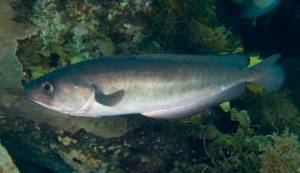
This fish is a member of the mora family, which is included in the subspecies of codfish. The fish is quite specific and got its name due to the characteristics of its body. After she is pulled out of the water, she begins to turn red. Hence the name “red cod”.
Appearance Features
The fish is characterized by a somewhat elongated body, on which there are many small scales. Externally, the color is somewhat inconspicuous: a gray tint predominates on top, and is characterized by a light pink tint closer to the bottom. The head is partially flattened from the sides, and a small dark spot can be seen outside the head.
The structure of her jaws is somewhat unusual: the upper jaw is somewhat more massive than the lower jaw, including longer. On the jaws there are a large number of small but quite sharp teeth, resembling brushes in appearance. You can actually find a small whisker in the lower part of the jaw. The length of the fish grows to a maximum of 70 cm, with an average weight of 1.5-2 kg, although there have been specimens up to 90 cm in length.
Habitats
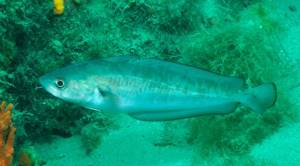
Red cod is found in the coastal waters of Australia, New Zealand and Tasmania. It is mainly located at a distance from the shore in the middle layers of water, and approaches the coastline exclusively to find food for itself.
Reproduction
This species breeds in areas where they spend most of their lives. Before the spawning process, the bacchus moves closer to the coastal zone. This period begins at the end of spring or the beginning of summer. To lay eggs, red cod choose places at a depth of 50 to 70 meters. After the fry are born, their diet includes plankton, and as they grow older they switch to feeding on small living organisms, and then on eating fish.
Fishing

Since the fish is tasty, it is caught at a high rate. Within New Zealand, the red cod population is quite significant. The fish is found at depths from 10 to 200 meters. Up to 7 thousand tons of this tasty fish are caught annually. Australia and New Zealand are considered the main suppliers of this fish. It is supplied fresh frozen to almost all European countries.
Why is this fish interesting?
Interesting instructive facts about this fish are known. For example:
- Despite the fact that it belongs to the cod-like species, it has nothing to do with cod. She is different from her both in appearance and behavior.
- It can be easily distinguished from other fish by its characteristic dark spot located behind the head.
- It changes color as soon as you take it out of the water.
- This fish is prized, and meat-based dishes are considered a delicacy.
Secrets of proper cooking
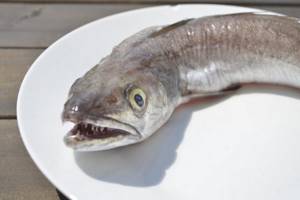
Before cooking, you need to properly defrost the product; to do this, transfer it from the freezer to the refrigerator for 4–5 hours. If you defrost at higher temperatures, you can ruin the structure of the fish, it will become limp and tasteless. The consistency of hoki is very watery, so after washing it is advisable to dry it or wipe it with a paper towel. Excess moisture will prevent you from preparing a delicious dish.
It is not recommended to cook fish for too long, so stewing for khoki is not suitable. It is better to fry the fillet over high heat in a frying pan with a thick bottom. It cooks very quickly, so there is no need to wait for the crust to turn golden brown.
Hoki can be baked in the oven by adding onions, spices and cheese. This simple cooking method is a good alternative to boiled or steamed fish steak. It is very rare to find recipes for grenadier in batter or as a filling for pies. It is worth considering that during heat treatment the fillet is greatly reduced in size.
Suitable garnish for khokie:
- assorted vegetables - broccoli, asparagus, beets, peas, cauliflower;
- baked, fried or boiled potatoes;
- rice;
- pickles;
- stew with eggplant, carrots, sweet bell pepper and white cabbage;
- salad of fresh tomatoes and cucumbers.
Contraindications and possible harm
Contraindications include individual intolerance or allergic reactions to the product.
Important: Hoki lives deeper than other species of marine fish and is not susceptible to the harmful polluting influences of the environment. It does not accumulate salts of heavy metals (mercury) and is an environmentally friendly and harmless food product.
Recommended for safe use even for children under three years of age, pregnant and lactating women.
What products does it combine with?
Compatibility table with other products
| Fine | Ghee, whey, greens, cabbage, carrots, beets, pickles, green vegetables |
| Acceptable | Rice, buckwheat, lemon, quinoa, tomatoes, butter, vegetable oil, pumpkin, eggplant, zucchini |
| Badly | Meat, poultry, eggs, mushrooms, cream, sour cream, lard, nuts, seeds, potatoes, dairy products, cheeses, feta cheese, wheat, rye, oats, bread, peas, chickpeas, mung beans, beans, beans, lentils, |
Oven baked khoki recipe
Macroronus can also be baked in the oven, but in this case it is necessary to carefully study the cooking process, since improper heat treatment in the oven will disrupt the integral structure of the fish fillet.
Main Ingredients
To prepare this dish we will need:
- 500 g fish fillet;
- 50 g hard cheese;
- 1 tbsp. l. flour;
- salt (to taste);
- one egg;
- seasoning for fish (nutmeg, savory, curry, cumin, parsnip, rosemary, varieties of ground pepper, peppermint, white mustard, garlic, dill, parsley, marjoram);
- vegetable oil.
Step-by-step recipe with photos
The process for making baked khoki is as follows:
- As in the previous case, cut the fish fillet into small pieces.
- Prepare the batter, which will consist of grated hard cheese, eggs, fish seasoning, flour and salt. To prepare the batter, you first need to beat the egg, and then add grated cheese, flour and seasonings. After this, beat everything thoroughly until smooth.
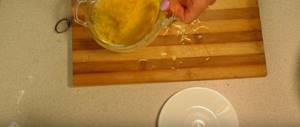
- Now you need to grease the baking dish with vegetable oil.
- When the mold is prepared, you can dip the fish in batter and place it on a baking sheet.
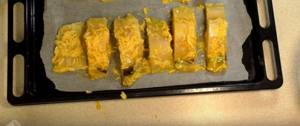
- Bake the fish at 180°C for 20 minutes. After this, the dish can be served.

Important! Women during pregnancy and lactation are recommended to consume baked khokie, as it is rich in all the vitamins and minerals necessary for a child, but does not contain excess fat, as when fried in a frying pan.
Serving
Most experienced chefs and cooks believe that such fish should be served along with a side dish of rice and vegetables, and rice and vegetables can be served as separate dishes. An excellent option would be made from rice cooked with cream and salad. Vegetable salad is prepared from cucumbers, tomatoes, feta cheese, frisee or iceberg leaves and red onion. And, of course, baked fish goes well with aromatic white wine.
Interesting Facts
- The most important distinguishing mark of a Hoki fish is the black spot on its head;
- The fish changes color when it is on sushi;
- Almost everywhere, red cod is highly valued, and a dish based on this fish is considered a delicacy;
- Hoki contains the right amount of iodine, which does not harm the body, but rather strengthens it;
- Although red cod is classified as a cod-like fish, hoka fish has little in common with cod, and to be more precise, it has nothing in common with cod.
Read: Dangerous ice

